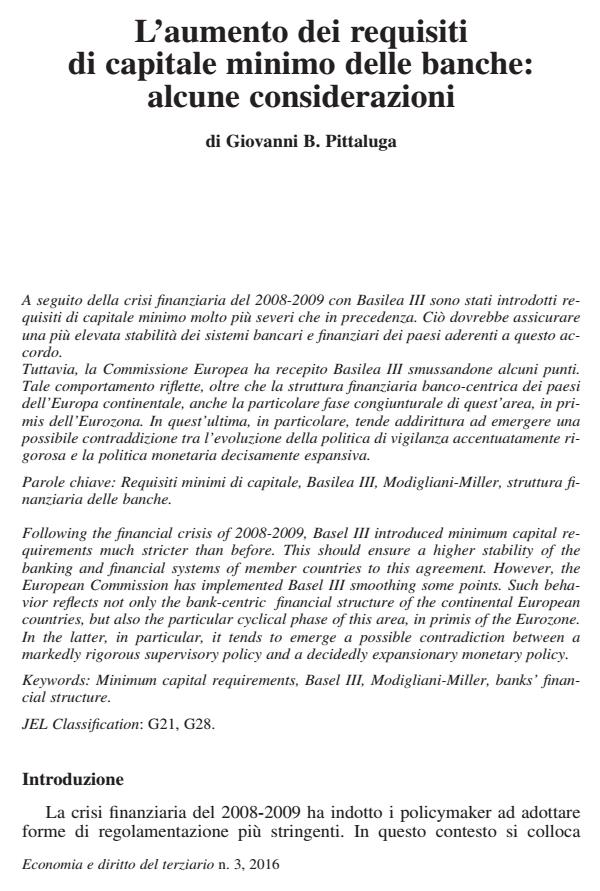L’aumento dei requisiti di capitale minimo delle banche: alcune considerazioni
Journal title ECONOMIA E DIRITTO DEL TERZIARIO
Author/s Giovanni B. Pittaluga
Publishing Year 2017 Issue 2016/3
Language Italian Pages 14 P. 409-422 File size 453 KB
DOI 10.3280/ED2016-003004
DOI is like a bar code for intellectual property: to have more infomation
click here
Below, you can see the article first page
If you want to buy this article in PDF format, you can do it, following the instructions to buy download credits

FrancoAngeli is member of Publishers International Linking Association, Inc (PILA), a not-for-profit association which run the CrossRef service enabling links to and from online scholarly content.
Following the financial crisis of 2008-2009, Basel III introduced minimum capital requirements much stricter than before. This should ensure a higher stability of the banking and financial systems of member countries to this agreement. However, the European Commission has implemented Basel III smoothing some points. Such behavior reflects not only the bank-centric financial structure of the continental European countries, but also the particular cyclical phase of this area, in primis of the Eurozone. In the latter, in particular, it tends to emerge a possible contradiction between a markedly rigorous supervisory policy and a decidedly expansionary monetary policy.
Keywords: Minimum capital requirements, Basel III, Modigliani-Miller, banks’ financial structure.
Jel codes: G21, G28
Giovanni B. Pittaluga, L’aumento dei requisiti di capitale minimo delle banche: alcune considerazioni in "ECONOMIA E DIRITTO DEL TERZIARIO " 3/2016, pp 409-422, DOI: 10.3280/ED2016-003004